Article
Changing teenagers’ lives, one pair of glasses at a time
Author(s):
Dr. Harrie started a vision-screening program at a youth detention center which gives him and his team an opportunity to screen adolescents in the criminal justice system before they are assigned to a rehabilitation program or a long-term incarceration facility.
After-hours
Since 2005, Roger Harrie, MD, his wife, and his church group have been volunteering every week at the Salt Lake Valley Detention Center, presenting the youth with classes on life skills such as how to go on a job interview and create a budget, along with spirituality based topics.

Salt Lake Valley Detention CenterAfter a few years, he realized the youth had yet another need: many of them needed correction for their poor vision. Dr. Harrie, professor of ophthalmology, John Moran Eye Center, University of Utah, Salt Lake City, was the perfect person to meet the challenge.
Sponsored: Join us in San Francisco for free dinner and discussion!
Dr. Harrie started a vision-screening program at the detention center that would follow his weekly visits. Since the detention center is the main drop-off location for minors who commit a crime in Salt Lake City, their stay at the unit can range from a few days to a few months, giving Dr. Harrie and his team an opportunity to screen a majority of the adolescents in the criminal justice system before they are assigned to a rehabilitation program or a long-term incarceration facility.
“We were surprised by these kids of how many don’t see very well,” Dr. Harrie said. “I felt that the number of these youth with significant refractive errors was disproportionately higher than would generally be expected.”
After-hours: DJ ophthalmologists in surgery by day, mixing music by night
Bringing two or three volunteer technicians and/or medical students with him, the team commits to 2 hours of teaching soft life skills and about 2 hours for vision screenings. For those whose vision is not optimal, he brings a variety of glasses of different powers to give away.
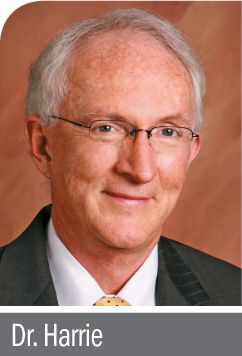
During the 5-minute vision screening, Dr. Harrie tries his best to mentor the teens and let them know that people care about them. Along with the glasses, he gives the youths a paper handout informing them of the average hourly wages of people with various levels of education, and encourages them to finish their schooling.
In about 7 years since the vision-screening program began, he has given away over 3,000 pairs of glasses. Originally, the glasses were donated from people who had LASIK or cataract surgery, but Dr. Harrie soon found that the majority of the teenagers did not like them and only wanted new, ‘cool’ glasses. Since then, he has paid out of his own pocket to provide new glasses freely.
After-hours: Vitreoretinal surgeon finds purpose in community service
“It’s one of those things, you just realize what an impact it makes, ” he said. “It’s worth doing to know that just a pair of glasses can sometimes make as much a difference as doing eye surgery.”
All images are courtesy of Roger Harrie, MD
Vision and deliquency correlation
For those whose vision is particularly bad-about 15% of the youth-Dr. Harrie orders them glasses of a specific power, but it gets difficult because many times the teen has already been transferred out of the detention center by the time he returns the following week.
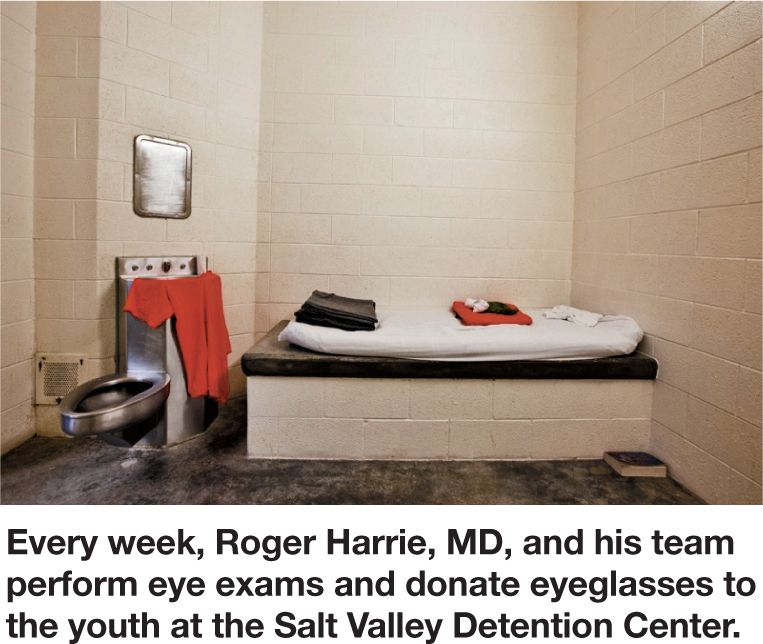
While a majority of the teenagers wear the glasses, a few of them refuse to do so, despite their refractive errors. He also finds that some of them (about a tenth) leave the glasses behind when they transfer out of the detention center.
Recent: How a cataract surgeon managed residency and fellowship-while having children
While contacts may be a better option for those individuals resistant to the idea of wearing glasses, he said contact lenses can create more issues in terms of hygiene and eye infections given the transiency of their situation. Still, he tries to connect them with resources for lenses after they are transferred.
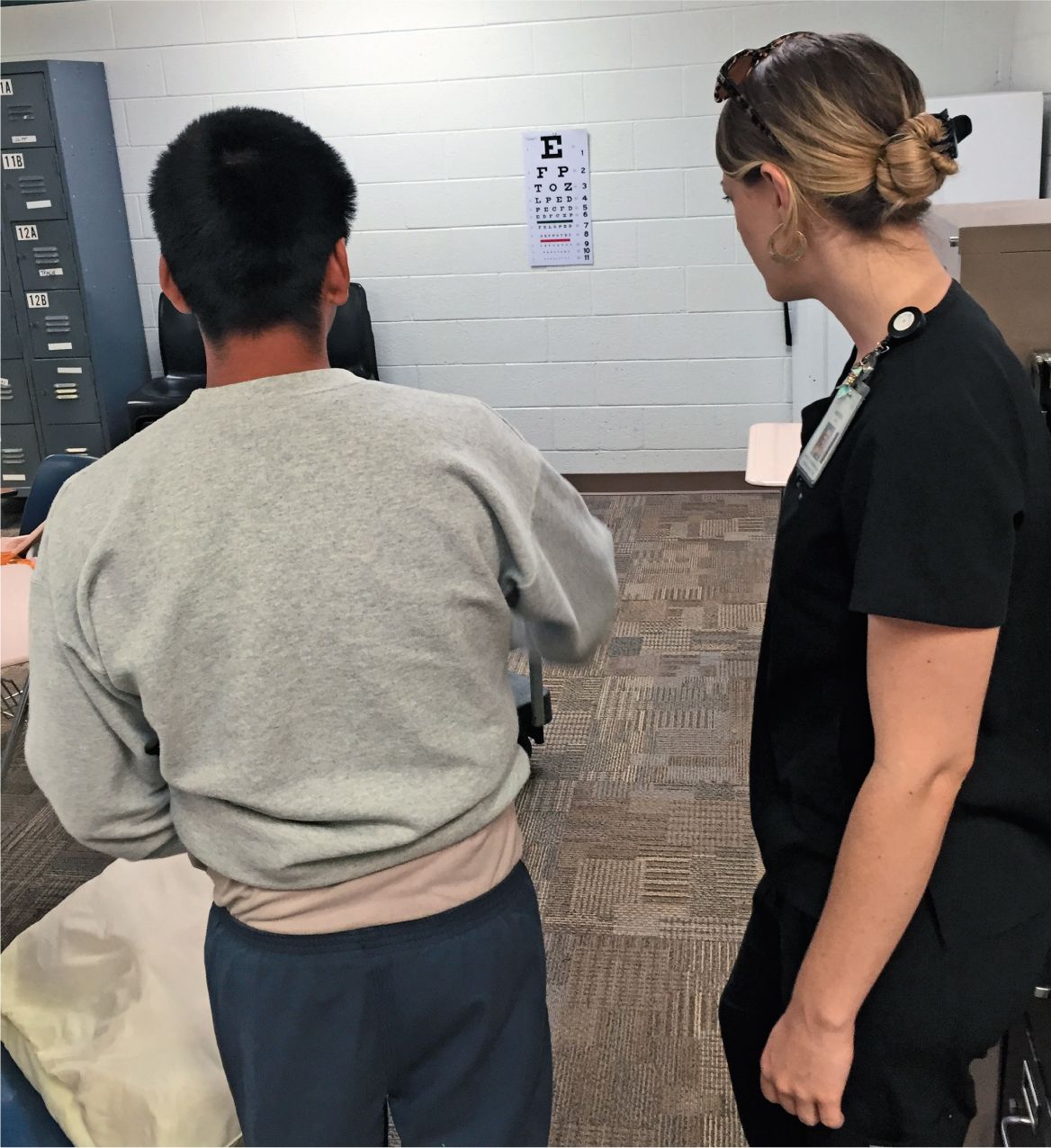
Over the course of years handing out glasses, Dr. Harrie started to wonder if there was a correlation between poor vision and youth delinquency. He collected research and published his findings in Child and Adolescent Social Work Journal (Child Adolesc Soc Work Jâ¨DOI 10.1007/s10560-015-0422-4).
Blog: 3 habits for successful time management
When compared with adolescents in junior high school, Dr. Harrie found that those in the detention center were about two times as likely to have refractive errors.
He proposed that the main factors for this frequency of vision problems may be the teenagers’ social situations, with often weak, if any, family ties and a lack of follow up and access to healthcare. Even if Medicaid would pay for them, Dr. Harrie said, their lives are often not stable enough to have access to it and they can easily get “lost in the cracks.”
All images are courtesy of Roger Harrie, MD
Out-of-control juvenile
Poor vision can be a factor in poor school performance, Dr. Harrie said, which can lead an increased likelihood of dropping out and becoming involved in crime.
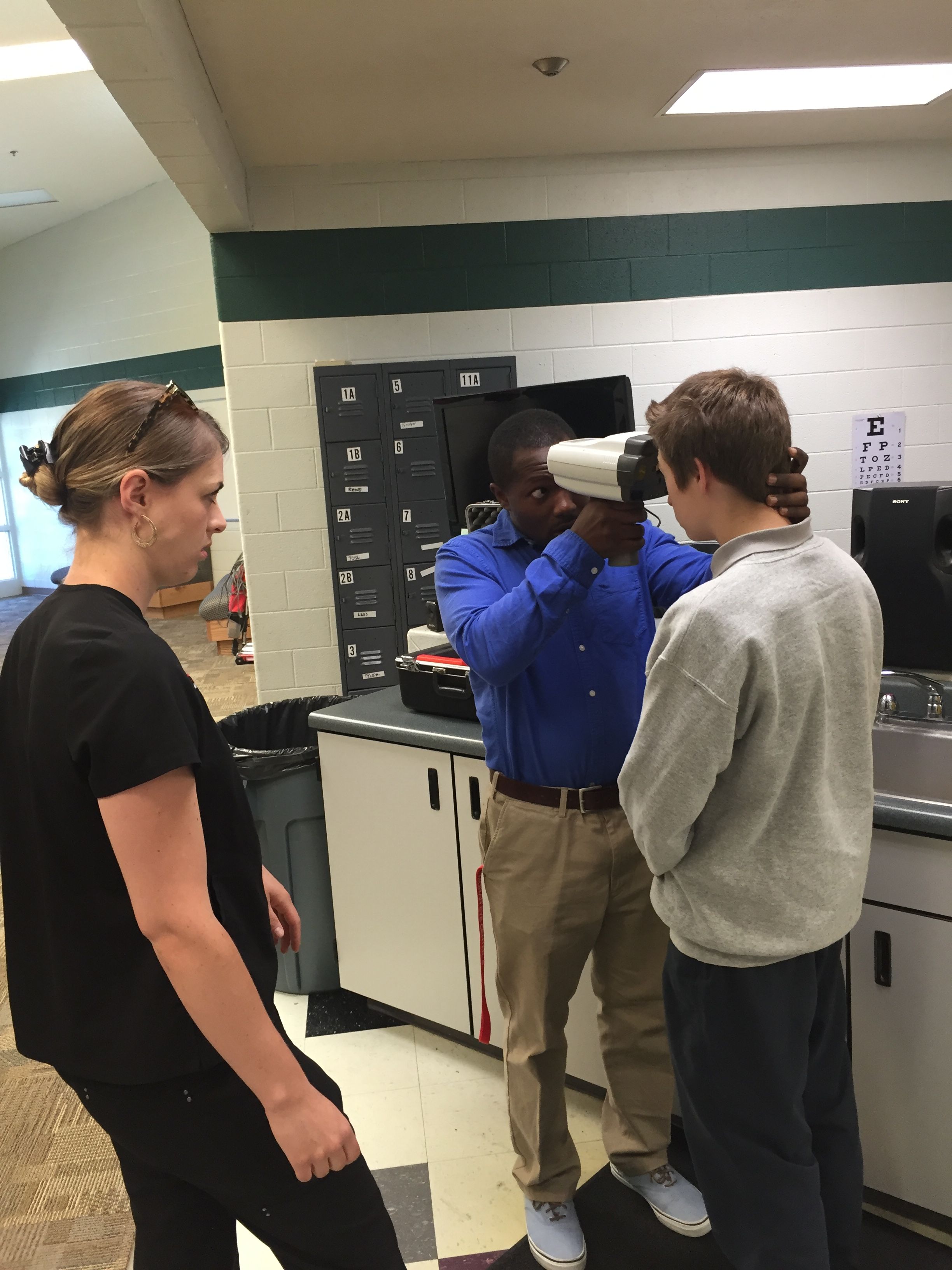
While his research does not identify a causal relationship between poor vision and delinquency, Dr. Harrie recalls a phone call he received one Sunday evening from the detention center that provided some insight into the situation.
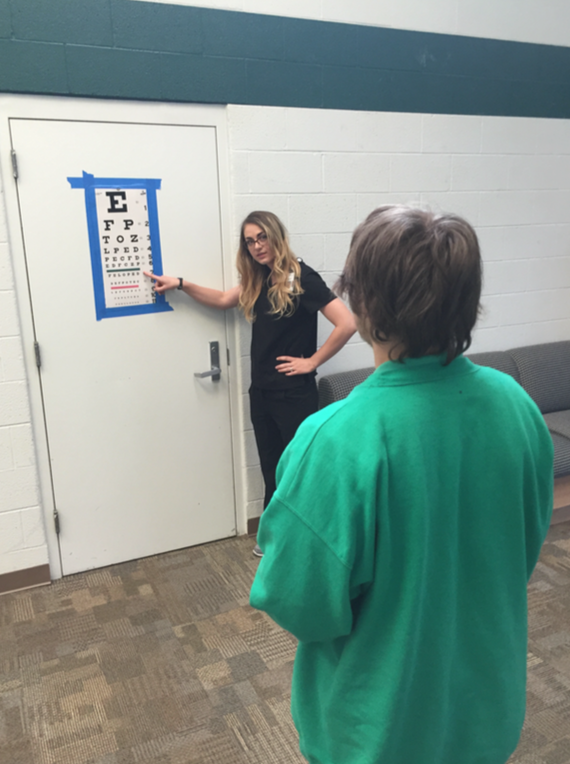
A volunteer technician checks visual acuity
News: Shire's FDA-approved drug ends dry eye treatment drought
A 15-year-old boy was out of control in the detention center and was so violent that he needed to be put into isolation. The officers called Dr. Harrie because the boy was saying that he could not see and was afraid of being attacked.
“I came down and checked him, and he was really pretty bad,” Dr. Harrie said. “He was about a -5, which would translate on the eye chart to the top of the chart, or even worse. I had some glasses of that power so I just put them on and it was an instant transformation.”
Practice Management: Value-Based Payment program presents potential ramifications
The boy immediately calmed down and was able to be put back in the general unit because he wasn’t feeling threatened.
Since he published his research, Dr. Harrie is working on conducting a follow up study to discover if there is a correlation between the severity of the crime committed with the intensity of the vision problem.
All images are courtesy of Roger Harrie, MD
Making an impact
Making an impact
Dr. Harrie occasionally receives letters from teenagers expressing their gratitude for what he had done for them. He said giving back to the community is “very satisfying...[there is] immediate feedback that you can tell you’ve helped them and made an impact in their lives.”
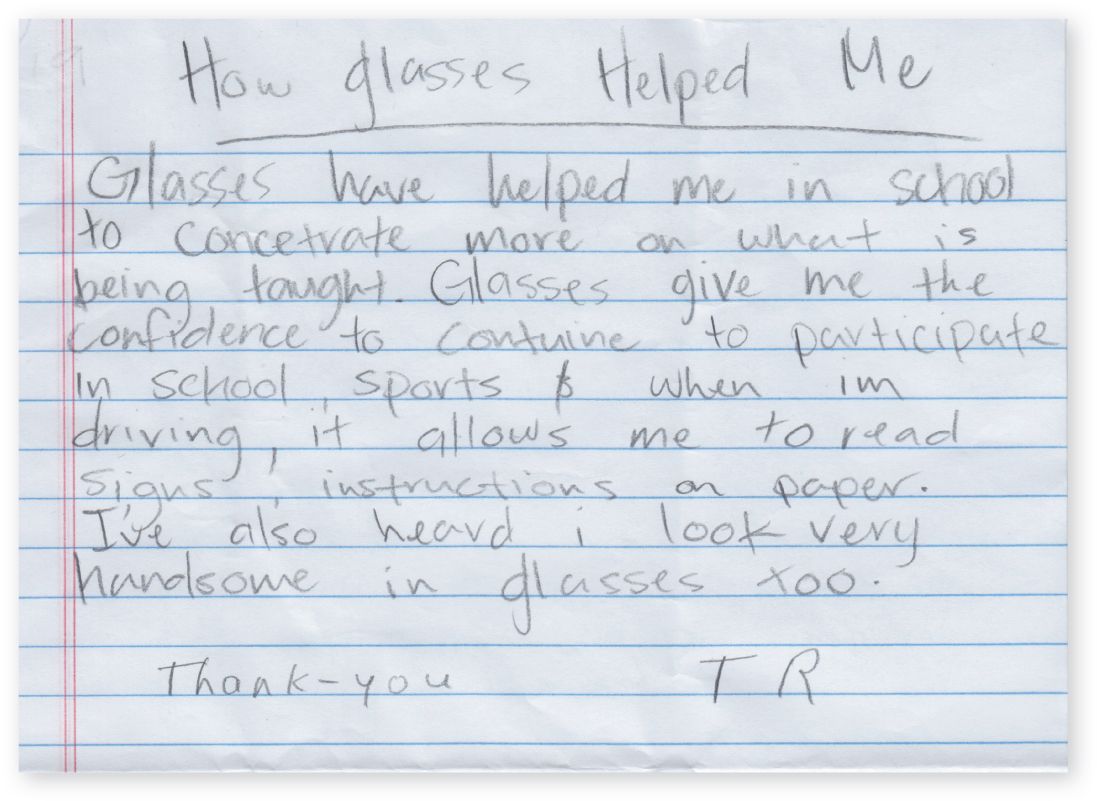
“I think a lot of doctors have been blessed with skills and knowledge, he sad. “The nice thing about ophthalmology is that its pretty high impact. In a short time period, whether it’s just a pair of glasses or whether it is cataract surgery, you can really impact a person’s life pretty dramatically.”
“I think a lot of ophthalmologists really want to try to help,” Dr. Harrie said, acknowledging that international volunteer trips aren’t always suitable for people who are raising a family or running busy practices.
Blog: 5 ways residents can sustain long-distance relationships
“The need is always there,” he said. By being aware in their own communities, ophthalmologists can have a high impact on others in a short time period. Whether in low-vision centers, parent-teacher associations (PTAs), or homeless shelters, those who are willing to help others are sure to find an area in which they can make a difference.
Recent: 3 steps to a successful consumer review
“Wherever you are there’s a need,” Dr. Harrie said. “You don’t have to go to foreign countries to find a need.”
All images are courtesy of Roger Harrie, MD
Newsletter
Don’t miss out—get Ophthalmology Times updates on the latest clinical advancements and expert interviews, straight to your inbox.





